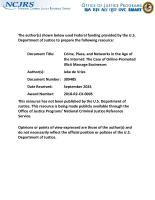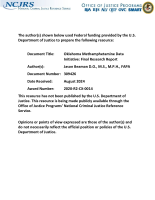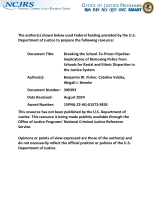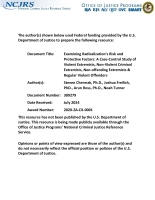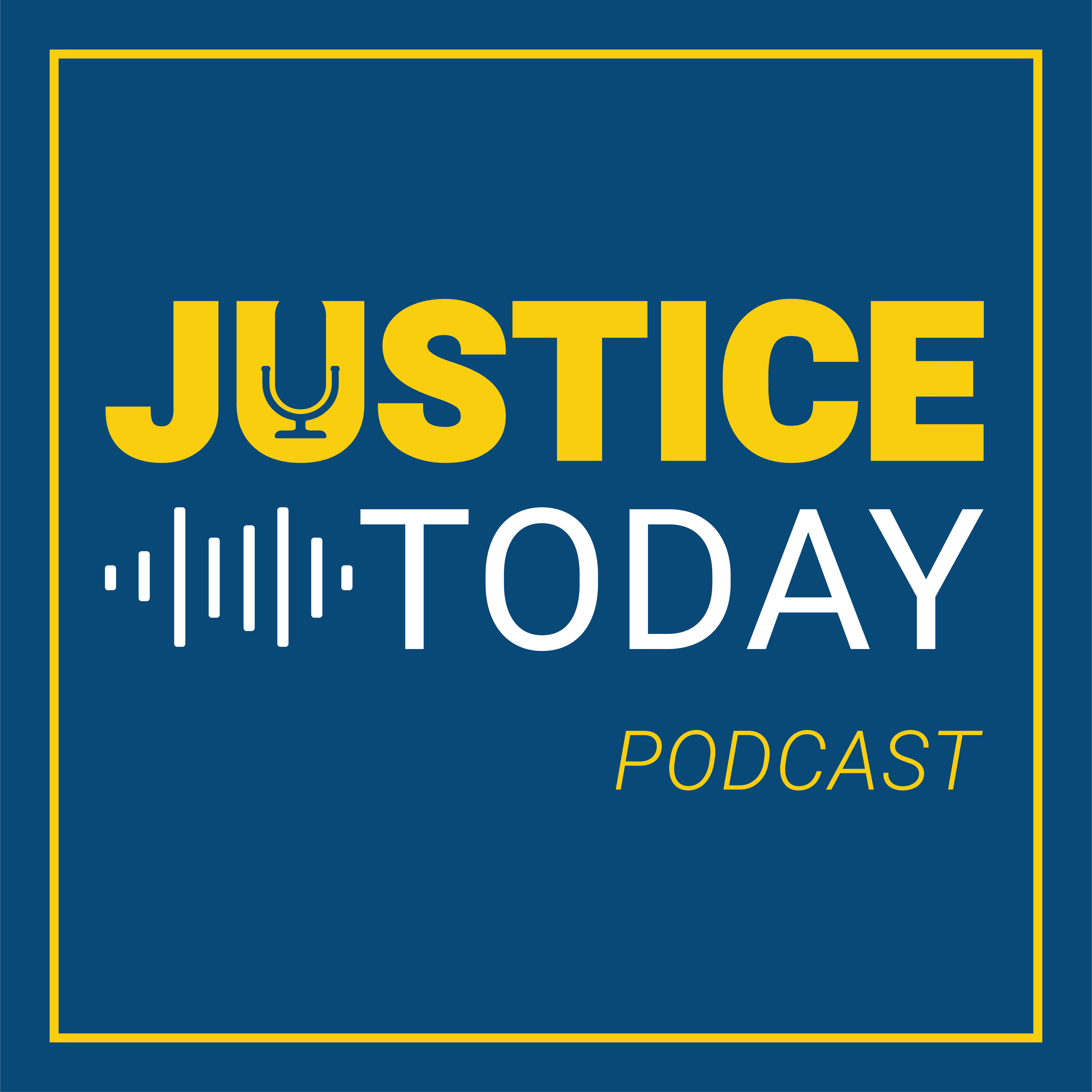Offenses
The Consequences and Impacts of Hate Crime and Post-Victimization Experiences: The Longitudinal Hate Crime Victimization Survey (LHCVS)
Understanding and Evaluating Police Bias Crime Unit Practice and Impact
Intelligence-Led Policing in New Jersey: Data Integration to Support the Investigation of Gun Crimes
Exploring the Intersection of Human Trafficking, Drug Trafficking, and Other Criminal Activity in the United States
Oklahoma Methamphetamine Data Initiative: Final Research Report
Breaking the School-To-Prison Pipeline: Implications of Removing Police from Schools for Racial and Ethnic Disparities in the Justice System
The Forensic Examination and Comparison of Plastic Garbage Bags
Examining Radicalization's Risk and Protective Factors: A Case-Control Study of Violent Extremists, Non-Violent Criminal Extremists, Non-offending Extremists & Regular Violent Offenders
Understanding the Impact of COVID-19 on Victim Services
The COVID-19 pandemic had a detrimental impact on communities across the nation and significantly affected various aspects of individuals’ lives. One of the negative impacts was an increase in gender-based violence accompanied by shifting barriers to accessing services and support. Victims and victim service providers faced various challenges dealing with the increase in need for services, navigating barriers to help-seeking, and addressing logistical issues.
See the YouTube Terms of Service and Google Privacy Policy
A Study of Trauma and Resiliency among Forensic Examiners Investigating Child Pornography
Neurofeedback Enhanced Trauma Treatment for Adolescents in Residential Treatment
A National Portrait of Project Safe Neighborhoods Implementation
NIJ Journal No. 282 — Violent Crime
Closing Cases Using Gunshot Residue
Not every crime scene will have definitive evidence, such as DNA, to link an individual to a crime. In those cases, law enforcement relies on other evidence to build the burden of proof. NIJ graduate research fellow Dr. Shelby Khandasammy developed a tool to analyze organic gunshot residue and distinguish between different firearms calibers and manufacturers. She joins Marie Garcia, office director for the Office of Criminal Justice Systems at NIJ, to talk about her work and experience as a research fellow.


